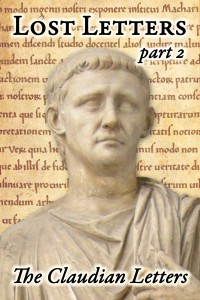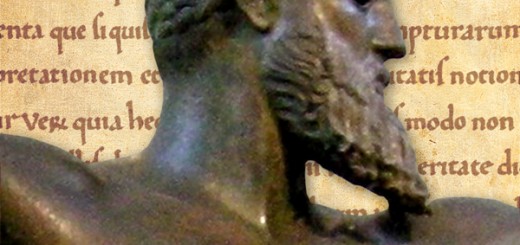Lost Letters: The Claudian Letters
 Last week, we looked at some of the letters dropped from the Greek Alphabet — letters that never even made it into Latin. This week, we’ll look at the Claudian Letters, three new letters introduced by the Roman Emperor Claudius. But first, a little background on the Latin Alphabet.
Last week, we looked at some of the letters dropped from the Greek Alphabet — letters that never even made it into Latin. This week, we’ll look at the Claudian Letters, three new letters introduced by the Roman Emperor Claudius. But first, a little background on the Latin Alphabet.
Etruscan Influence
On its way from Greece to Rome, the alphabet had a layover in Tuscany, where it was adapted for the Etruscan language. Etruscan was, as far as we know, unrelated to any other language, and it had a sound inventory unlike Greek or Latin. For example, the Etruscans had a guttural /q/ sound, which preserved the otherwise useless letter Q. In addition, the Etruscans did not have a sound for /g/, so the Greek letter Gamma (Γγ) got changed to a /k/ sound, becoming the letter C. This left the Romans with three letters for /k/ and none for /g/.
Early Roman Reforms
From the Etruscans, the early Romans inherited the alphabet “ABCDEFZHIKLMNOPQRSTVX”. Since there was no letter for /g/, they started writing a C with a tail whenever it was voiced. They also dropped the letter Z, the seventh letter of the alphabet, since there was no such sound in Ancient Latin. That opened up a spot for the new C-with-a-tail letter G.
A few centuries later, the Roman Republic had conquered much of the Mediterranean, including Greece. This led to an influx of Greek words into Latin. These Greek words had funny sounds that weren’t in the Latin Alphabet, so a guy named Appius Claudius (an ancestor of the Emperor Claudius) added two new letters, Y and the previously-spurned letter Z, which lost its place in the alphabet and went to the end.
Claudian Letters
Writing systems tend to be very resistant to change, but if anyone could change the alphabet, it would be a Roman Emperor. After all, Julius Caesar managed to rename the month of Quintillis after himself. So when Claudius looked at the alphabet, he figured he could add some letters. He added three: Antisigma (Ↄↄ) represented /bs/ and /ps/, in the same way that X represents /ks/ or /gs/. Digamma Inversum (Ⅎⅎ) signified a /w/ sound, and H-Dimidia (Ⱶⱶ) represented a vowel sound between /i/ and /u/. While these letters were used on some inscriptions during Claudius’ lifetime, they were abandoned after his death.
After Claudius, the Latin Alphabet did not gain any new letters till the Middle Ages, when W joined the alphabet, filling the role of Ⅎ. Even so, W had a competitor in the English Alphabet. In next week’s installment, we’ll look at some of the letters used in the early days of the English language.








Where were they in the alphabet?